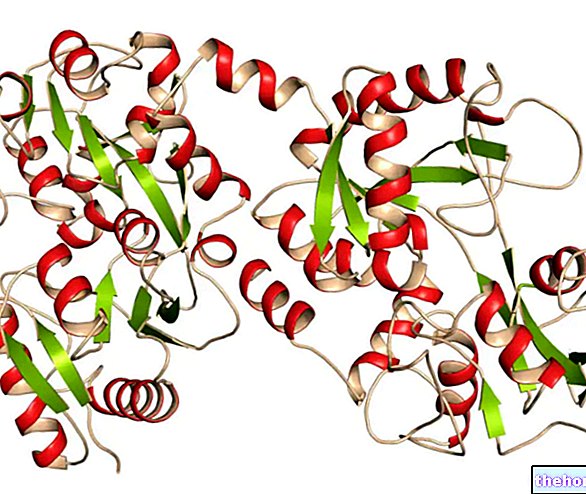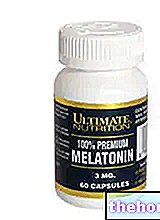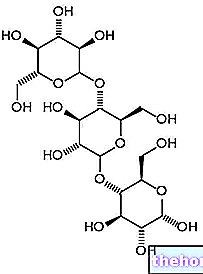What is Strychnine
Strychnine is a particularly toxic alkaloid, still used today as a pesticide against small vertebrates such as birds and rodents.
More rarely, strychnine is found in very small doses mixed with drugs such as heroin, cocaine and LSD.

Poisoning can occur by accidental ingestion of pesticides, contaminated food and water, or by inhalation or absorption of strychnine through the membranes of the nose, eyes and mouth.
Employments
Despite the high poisonous power, until the middle of the last century small doses of strychnine were used in stimulating preparations, laxatives and against stomach ailments.
Also well known is the "use of the substance in sports for doping purposes, in particular in the early 1900s Olympics" (famous are the cases of Thomas Hicks in the 1904 Saint Luis Olympics and of Dorando Pietri in the 1908 London Olympics).
Where is it
Strychnine is contained in the seeds of plants belonging to the genus Strychnos; the highest concentration was found in the cortex of Strychnos Icaja (6.6%), although the substance is traditionally extracted from the seeds of nux vomica (Strychnos nux vomica), an arboreal plant that grows in Australia and in the South Asian regions (India, Sri Lanka, and East Indies). Strychnine comes as a white powder - crystalline, odorless and with an extremely bitter taste - which can be taken by mouth, inhalation or intravenous solution.
How it works
Strychnine is a competitive antagonist of glycine, an inhibitory neurotransmitter of the central nervous system, particularly the spinal cord.
The poison acts by preventing the interaction of glycine with its specific receptors. Lacking this very important inhibitory brake, prolonged, painful and generalized muscle contractions are produced, similar to convulsions. The simultaneous contraction of the extensor and flexor muscles causes serious damage muscle, with myoglobinuria and the appearance of specific markers (CPK) in the circulation.
Symptoms of strychnine poisoning may appear shortly after ingestion, usually within 15 to 30 minutes, and depending on the dose taken can be dramatic. Symptoms include: agitation, apprehension, fear, restlessness, painful muscle spasms which can cause fever. and hepato-renal lesions, tension of the jaw and forced facial grimaces. In the most serious intoxications, opisthotonus appears: following even minimal sensory stimulation, the body stiffens, the head bends backwards and the back arches in the typical position of hyperflexion ; few of these attacks can cause death from asphyxiation.
The patient poisoned with strychnine is awake and painfully aware of muscle contractions, a characteristic - this - that differentiates the symptomatology from epileptic seizures.
In addition to asphyxia from spastic paralysis of the respiratory muscles, death can occur from hyperthermia or renal insufficiency from excessive rhabdomyolysis.
Treatment of poisoning
As there is no specific antidote against strychnine, the therapy is based on the administration of benzodiazepines (relax the skeletal muscles), activated charcoal or equivalent substances (facilitate the elimination of strychnine not yet absorbed) and oxygen in case of need. It is indicated. body temperature monitoring and hospitalization in quiet environments to minimize sensory stimuli.
Homeopathy
Although the therapeutic index (ratio between lethal dose in 50% of the sample and effective dose in 50% of the sample) is so low as to be practically non-existent, strychnine is used, indirectly and in small doses, in homeopathic medicine, where even today extensive use is made of preparations obtained from ripe and dried seeds of nux vomica, indicated in the presence of constipation, haemorrhoidal affections, general malaise and muscle-tendon disorders.
Select plant Fir Acacia Acerola Sorrel Yarrow Yarrow Yarrow Aconito Adatoda Garlic Agnocasto Agrimonia Alchemilla Alkekengi Aloe Altea Witch Hazel Ammi or Visnaga Pineapple Andrographis Anemone Pulsatilla Angelica Anise Star Anise Japanese Star Anise Bitter Orange Bitter Areca Arnica Harpagophytum Arpagophyte Artemisia Asteragus Basil Asparagus Asparagus Peruvian Asparagus Asparagus Asparagus Hawthorn Boldo Borage Shepherd's Purse Boswellia Bucco Butea superba Cocoa Coffee Cajeput Calamus Calamus Marigold Camedrio Chamomile Roman Chamomile Camphor Cinnamon Ceylon Maidenhair Capuchin Artichoke Cardamom Cardiac Thistle Asian Thistle Carvi Cascara Cassia Catecu Catha Cabbage Celandine Chicory Centaurea Cinnamon Cypress Celandine Chives Cypress Coca Cola Colchico Combreto Condurango Comfrey Coriander Cranberry Barberry American Chrysanthemum Cumin Turmeric Damiana Digital Dioscorea Drosera Dulcamara Dunalilella Echinacea Eder a Ephedra Elenio Eleutherococcus Helichrysum Evening primrose Horsetail Alfalfa Erica Euphrasia Erisimo Escolzia Eucalyptus Farfara Farfaraccio Calabar bean Fenugreek Fennel Phytolacca Frangola Ash Fumaria Japanese Mushrooms Galega Ganoderma lucidum Garcinia Cambogia Mulberry Gentian Broom Ginkgo Ginkgo Guipana Guipana Gynestra Ginkgo Hibelia Gymnasium Hibiscus Guarulp St. John's Wort Horse Chestnut Ispaghul Hyssop Jaborandi Kava kava Konjac Laminaria Cherry Laurel Lavender Lemongrass Lespedeza Lovage Icelandic Lichen Lemon Flax Lippia Licorice Lobelia Hops Maca Marjoram Maize Mallow Manna Marrubio Marrubio d "water Matè Melaleuca Meliloto American Lemon balm Myrtle Myrama Walnut Nutmeg Walnut vomica Olive tree Meadowsweet Ononide Opuntia Oregano Orthosiphon Nettle Poppy Papaya Parietaria Feverfew Passiflora Chilli Perilla Periwinkle Phyllanthus Plantain Picrorhiza Pilosella Pino Pisci dia Podofillo Polygala Grapefruit Parsley Psyllium Pueraria mirifica Butcher's broom Pygeum Quassia Oak Rhubarb Ratania Rauwolfia currant Castor bean Rhodiola Rosehip Rosemary Rue Willow Sarsaparilla Sage Elderberry Sassafras Sedum Ergot Senna Serenoa Repens Soybean Solidago Tansy Taraxus Tamarind Tamarind Tamarind Tamarind Tamarindo Ursina Valerian Vanilla Mullein Verbena Veronica Viburnum Vinca Pansy Mistletoe Vine Withania Yohimbe Saffron Ginger Pumpkin Select disease Juvenile Acne Rosacea Tinnitus Tinnitus Aerophagia Tendon Affections Afonia Aphthae Algias Functional Halitosis Breastfeeding Allergy Anemia Anguish Anxiety Arteriosclerosis Asthrosis Asthrosis Arthritis Arthritis Men Sex Woman Blepharitis and Conjunctivitis Eye bags Bronchitis Gallstones Kidney stones Salivary stones Baldness Androgenetic Candida Fragile hair Caries Headache Cellulitis Motion sickness Cystitis C limaterio Cholecystopathy High cholesterol Ulcerative colitis Colonoscopy Contusions Hematoma Convalescence Couperose Depression Dermatitis Diaper dermatitis Diabetes Diarrhea Erectile dysfunction Dyslipidemia Dysmenorrhea Dyspepsia Disturbances of vision Hemorrhoids Epistaxis Herethism Heart disease Fever Fibromyalgia Gastro-intestinal disease Flatulence Hypertension Fibromyalgia Gastrointomnia Jaundice Laryngitis Renal lithiasis Toothache Sore throat Thinness Menopause Meteorism Mononucleosis Alzheimer's disease Crohn's disease Nausea Vomiting Obesity Dark circles Onychomycosis Osteoporosis Dry skin Periarthritis Piorea Low pressure Prostatitis Psoriasis Colds Breast fissures Anal fissures Gastro-nasal rhinitis Senescence Premenstrual Syndrome Sinusitis Quit smoking Overweight Fatty liver Constipation Stomatitis Stress Cough Triglycerides high Ulcer Burns Nails Brittle flashes Heat Warts Dizziness Properties herbal Tanning Abortive adaptogenic Aphrodisiac bittering analgesic anesthetic anorectics analgesic antacid anti-allergic anti-asthmatic Antibiotic catarrh Anticellulitiche anticonvulsant Antidiaforetiche antidiarrheal edematous anthelmintic antiemetic Antiemorroidarie antiphlogistic Antiidrotiche Antinevrotiche Antioxidants antipyretic antirheumatic antiscorbutic Antiseptic antispasmodic anti-uric Aperitive Flavoring Astringent Balsamic Bechiche Capillarotrope Cardiotonic Carminative Cathartic Caustics Healing Cholagogues Choleretic Dyes Decongestants Deodorants Purifying Diaphoretic Cleansers Disinfectants Detoxifiers Thirst quenching Diuretics Exciting Emetics Emmenagogues Emollients Hemostatic Energies Hepatoprotectors Expectorants Eupepticus Moisturisers Galactosensitizers lanti Hypertensive Hypnotic Hypoglycemic Hypotensive Irritants Laxatives Soothing Narcotic Nerves Nutrients Odontalgic Pectoral Purgative Revulsive Remineralizing Refreshing Rubefacient Scialagoghe Sedative Soporifugas Sneezing Stomachic Stomatics Narcotic Vascular Tightenitis




























